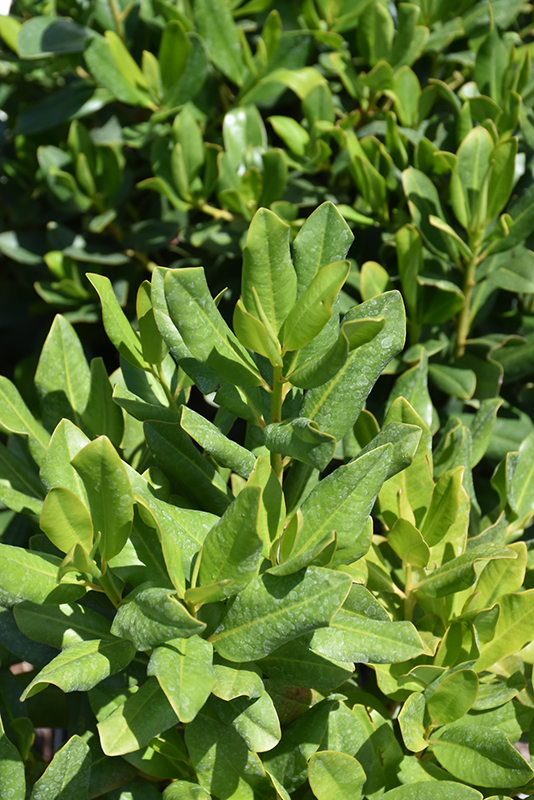Height: 20 feet Spread: 8 feet
Sunlight:
Hardiness Zone: 10a Other Names: Colicwood Description: A large shrub or small tree with an erect trunk and an irregular, narrow crown; attractive foliage is smooth and bright green; inconspicuous flowers peak in fall-winter followed by showy deep blue to black fruit covering the ends of branches Ornamental Features Myrsine is primarily grown for its highly ornamental fruit. It features an abundance of magnificent navy blue berries with powder blue overtones from late fall to mid spring, which fade to black over time. The fruit can be messy if allowed to drop on the lawn or walkways, and may require occasional clean-up. It has forest green foliage with grayish green undersides which emerges chartreuse in spring. The glossy oval leaves remain forest green throughout the winter. Landscape Attributes Myrsine is a multi-stemmed evergreen shrub with an upright spreading habit of growth. Its average texture blends into the landscape, but can be balanced by one or two finer or coarser trees or shrubs for an effective composition. This is a relatively low maintenance shrub, and is best pruned in late winter once the threat of extreme cold has passed. It is a good choice for attracting birds, bees and butterflies to your yard. Gardeners should be aware of the following characteristic(s) that may warrant special consideration; Myrsine is recommended for the following landscape applications; Planting & Growing Myrsine will grow to be about 20 feet tall at maturity, with a spread of 8 feet. It has a low canopy with a typical clearance of 1 foot from the ground, and is suitable for planting under power lines. It grows at a medium rate, and under ideal conditions can be expected to live for 40 years or more. This is a dioecious species, meaning that individual plants are either male or female. Only the females will produce fruit, and a male variety of the same species is required nearby as a pollinator. This shrub does best in full sun to partial shade. It is quite adaptable, prefering to grow in average to wet conditions, and will even tolerate some standing water. This plant should not require much in the way of fertilizing once established, although it may appreciate a shot of general-purpose fertilizer from time to time early in the growing season. It is not particular as to soil pH, but grows best in sandy soils, and is able to handle environmental salt. It is somewhat tolerant of urban pollution. This species is native to parts of North America..![]()
![]()
![]()
![]()
![]()
![]()
![]()
![]()
![]()
![]()
![]()
![]()
![]()
top of page
Louie's Nursery Menifee - Plant Finder
Characteristics
Applications
Features & Attributes
This tool is an online resource representing many of the varieties that we carry over the course of the season, and is intended for informational purposes only. Inventory varies seasonally, so we cannot guarantee that every plant will be in stock at all times - please contact the store directly for current availability. It does not include our entire selection of plants, so be sure to visit our store to see varieties that may not be represented on this list.
bottom of page
